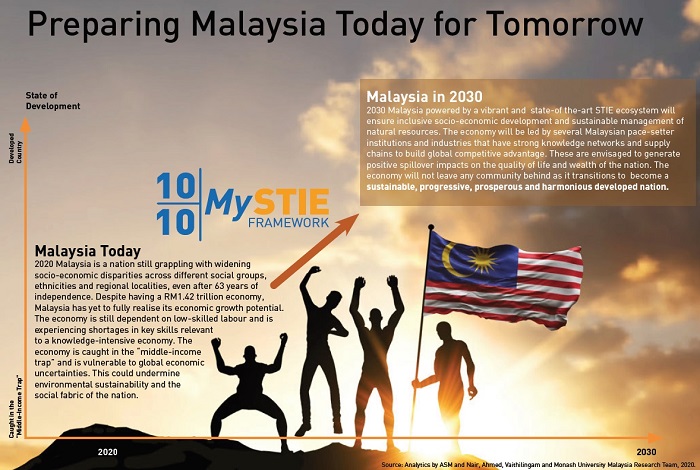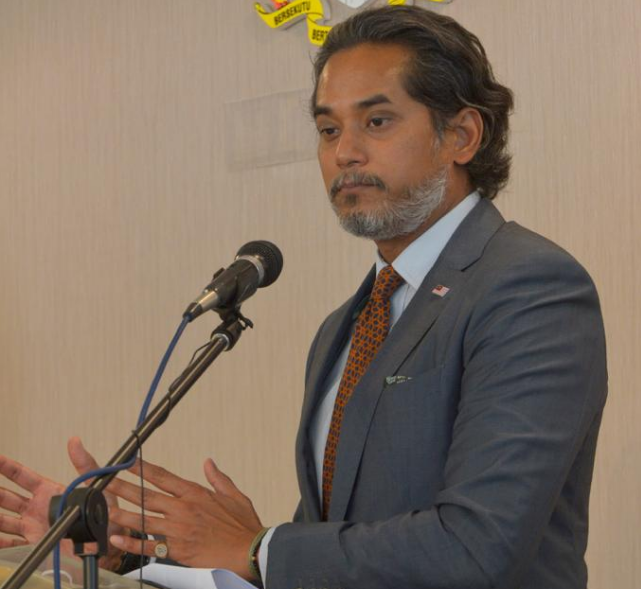Malaysia’s High-Tech Nation Council Will Champion Upcoming Technologies
By Khairy Jamaluddin December 20, 2020
- 30 niche areas & gaps identified & filled to ensure maximum impact
- Paper on Low-Touch Infra & Economic initiatives has identified key areas

 On Thursday, I chaired the first High-Tech Nation Council meeting, which aims to give strategic direction regarding existing and upcoming technology that has the potential to be developed in Malaysia. The High-Tech Nation Council will report directly to the National Science Council, which is chaired by the Prime Minister.
On Thursday, I chaired the first High-Tech Nation Council meeting, which aims to give strategic direction regarding existing and upcoming technology that has the potential to be developed in Malaysia. The High-Tech Nation Council will report directly to the National Science Council, which is chaired by the Prime Minister.
The programmes, roadmaps and policies under the High-Tech Nation Council are driven by the MySTIE 10-10 and National Science, Technology and Innovation Policy 2021-2030 that I launched last week. 30 niche areas were identified under this framework, and the High-Tech Nation Council will aim to fill in any gaps we have identified to make sure that there is maximum impact in these areas.
This Council will be proactive and champion upcoming technologies that we need to embark on as a nation to position us at the forefront of what is current and what is cutting-edge.
I have chosen to prioritise some of the programmes, roadmaps and policies in line with pressing national needs.
Some of the papers presented yesterday include the Ministry of Health's paper on precision medicine, which takes a personalised, predictive, preventive and participatory approach to medicine. This will be layered together with big-data analytics to give personalised recommendations to each person.
National Hydraulic Research Institute of Malaysia (NAHRIM) presented on the National Water Innovation Roadmap, to guarantee national water security. This involves five programmes; Clean River, Reserve Margin, Smart Water, Disaster Risk Reduction, and Water Financing.
The Ministry of Science, Technology and Innovation presented nine roadmaps that are currently being developed under our agencies. All of these roadmaps will be unveiled by the middle of 2021. These roadmaps will guide our investments and policy direction in rolling out these technologies. They will cover: blockchain, nanotechnology, robotics, hydrogen, artificial intelligence, integrated circuits and advanced materials among others.
The Academy of Sciences presented on institutionalising a Tech-Commercialisation Accelerator, to spearhead and coordinate economic-oriented research in the form of demand-driven R&D and market-driven delivery systems for disruptive innovations. I will be announcing this in due course.
The Malaysian Institute of Road Safety Research (MIROS) also presented on Motorcycle Technology: Solving a Dilemma between Economic Development and Safety. 66% of the fatalities on the road involve motorcycles. We hope to incentive the development, application and deployment of existing and future technologies to improve accessibility and all aspects of road safety. Potential areas we are looking at include testing and verification technology, crash avoidance technology, injury mitigation technology (in event of crash), social reintegration technology (which refers to smart first response and rehabilitation technology), and management and strategic planning technology.
The Ministry of Environment and Water presented the National Green Technology Innovation Roadmap, which aims to leverage green technology innovation for an environmentally sustainable Malaysia by 2030. Sectoral innovations under this roadmap include government green procurement, smart grid technology, green industrial process, IoT river monitoring, Waste to Energy and Wealth schemes, application of smart and green buildings, energy efficiency vehicles & electric vehicles, vertical & urban farming, and IoT forest monitoring.
Lastly, but not least, in line with behavioural changes due to Covid-19, I asked MOSTI to prepare a paper on Low-Touch Infrastructure and Economic Initiatives. These will require a paradigm shift in how we look and interact, both with each other, and the world around us. Some of the low-touch initiatives we have quickly identified include autonomous floor scrubbers, autonomous power assist robots (to carry your goods) and smart waste management systems in public markets. We've also launched robotics in hospitals together with MOH, and robotics, drones and artificial intelligence modules in plantations together with FELDA. Some of these initiatives will be realised via the National Technology & Innovation Sandbox.
Many of these programmes, roadmaps, and policies have existed and been implemented in silos by different ministries and agencies. This is just the start of how we relook at the development and application of technology in this country, to ensure everything is in line with our national needs and part of a coherent whole.
Khairy Jamaluddin is the Malaysian Minister for Science, Technology and Innovation. In the past he has also held the Youth & Sports Ministry and Communications and Multimedia portfolios, the former as Minister and the latter as Deputy Minister.


